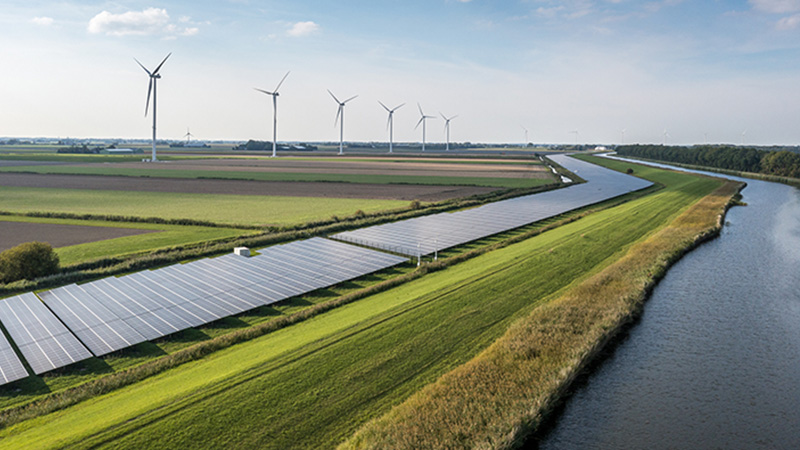Using steel as an example, the graph below shows how per capita consumption began to rise steeply, a path well trodden before by Asian economies, such as Japan and Korea, although not quite on China’s scale.
Figure 1: Steel consumption and prosperity
Combined with two decades of under-investment by the global mining and energy industries, the collision of these two trends – booming demand and under-investment in supply – sparked a rapid and sustained rise in commodity prices worldwide.
Broad indices, such as the Dow Jones UBS Commodity Price Index, have risen threefold over the past decade. The rise has been widespread across the commodities complex, but most notably in those commodities closely linked to industrialisation and imported by China. Precious metals have also been spurred in recent years by concerns over the potential inflationary consequences of unconventional monetary policies such as QE. The escalation in prices has been driven by fundamentals.
The cost of production has risen across the board for most commodities as the rapid rise in demand pushed resource extraction into more marginal resources (see the graph below). Deeper mines, lower-grade minerals, more remote and challenging locations and shortages of both labour and equipment have pushed up costs. Inventories and spare capacity fell across the board, in some cases to critical levels, at times pushing prices up to a level needed to destroy demand.
Figure 2: Market prices and production costs
A decade on from the 2002 inflection point, commodity markets have reached another inflection point. Evidence is mounting that the super cycle in commodity prices has ended. A peak in prices is consistent with the view of consultancy Research-Works that commodity price upswings last ten years, followed by a 20-year downdraft in prices.
The peak in the current cycle for a range of major commodities is well behind us. Aluminium, nickel, zinc, natural gas, oil, iron ore, hard-coking coal and thermal coal are in a wide range below their cyclical high points, as shown below.
The decline in broad commodities indices from their peaks so far has been muted due to the wide dispersion through timing of the peaks in the underlying commodities. While zinc reached its peak in November 2006, soybeans and corn have only recently hit their all-time highs.
Figure 3: Decline from peak to current price (%)
The combined forces of demand and supply are driving prices lower, just as they drove them higher in the upswing. On the demand side, China is settling into a more moderate pace of economic growth, while developed economies struggle with deleveraging headwinds. The commodity intensity of China’s growth is also waning – demand is still rising, but at a more moderate pace.
Global industrial production, after sustaining a 5%-plus pace of growth for most of the 2003-2008 period, is now weaker and more cyclical. Robust supply growth has also become increasingly evident, or is in prospect, for a wide range of commodities.
Weaker demand and increased supply have restored balance to commodities markets, with marginal cost once again providing an anchor for prices.
The story does vary from commodity to commodity, however. Copper, while down 19% from its peak at the time of writing, is still well above its marginal cost, reflecting the still low level of stocks. Corn and soybeans peaked at or close to all-time highs in nominal terms in 2012 as the worst drought in the past half-century ravaged the US, pushing stocks-to-use ratios to multi-decade lows. Cotton on the other hand has plunged 65% over the past 18 months after all-time high prices prompted a surge in supply.
Long-term game
Gold is being driven by a completely different set of factors. Fear of inflation from unconventional monetary policy measures has pushed it well above cost-based metrics.
While prices may well have peaked, this doesn’t mean they will soon revert back to their pre-2002 levels. Costs have risen and are unlikely to fall rapidly, supporting prices well above earlier levels. In fact, cost pressures continue to intensify for some commodities as production increases.
Previous cycles suggest that the downswing in commodity cycles can last two decades. Over the past century, major commodities such as copper and oil have had flat trends in real terms, but have exhibited considerable volatility from decade to decade.
After weakening in 2012, cyclical commodities, such as metals, iron ore and coal, are cheap and should show some signs of strength as the global economy recovers. However, the deleveraging headwinds and China’s more sustainable pace of growth suggest only a muted uptick compared with the 2009 cycle.
Demand for precious metals, such as gold, will reflect expectations of QE and the fear of inflation, so gold prices could weaken if inflation is held in check by sustained excess capacity. A more aggressive phase of QE with outright monetisation of government debts may be required for the gold price to sustain new highs.
Supply-side issues pose risks for energy. The oil market has tightened owing to supply disruptions related to the embargo on Iranian oil exports. We expect only limited downside from current levels. Agricultural prices will be dominated by weather trends – the US drought and changes in the ‘La Niña’ and ‘El Niño’ weather patterns will be critical events to watch. While prices are likely to fall for corn, wheat and soybeans if weather trends normalise, they should remain elevated for some time yet given the market’s imbalance.
After an upturn lasting a decade, the commodity super cycle’s end is at hand. There’s no better cure for high prices than high prices themselves, which incentivise new supply and encourage substitution.
Combined with weaker global growth and China’s waning commodity elasticity of demand, the scene is set for a momentum shift. This doesn’t imply an immediate widespread collapse in prices back to previous levels. Costs have risen and won’t easily reverse, and it is worth reiterating that downward trends in commodities prices have historically taken decades, not years, to play out.
But the markets and economies that have benefited from the commodity super cycle tailwind are now just beginning to experience the chill of the other side of the super cycle.










